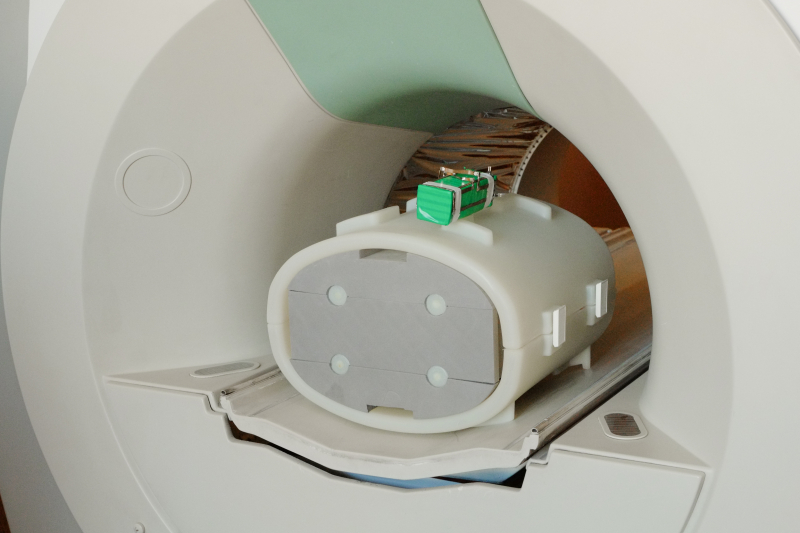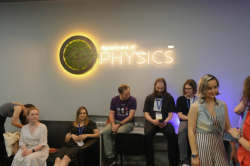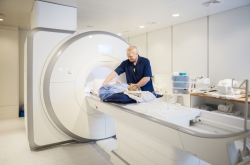Improving the experience of both patients and specialists
Conducted as part of the Russian Science Foundation grant project entitled Tunable Metasurfaces for Wireless Technologies, the study aims to create a new generation of devices for 5G, wireless power transfer, and magnetic resonance imaging (MRI) systems that are safe, efficient, compact, and, above all, wireless.
Although various devices (e.g. special additional antennas such as the so-called local coils) are widely used in MRI to accelerate the scanning process and improve the quality of images, they have to be connected to a power supply via cables, which is often extremely uncomfortable for patients. Some of these devices, such as those used for spine, knee, and breast scans, are also too heavy to lift, causing challenges for medical specialists. In this sense, moving away from unwieldy equipment and wires would make scanning easier and more manageable.
Wireless technologies are actively developing nowadays due to the trend towards compact setups and higher energy efficiency. An example of such a technology is energy harvesting, which relies on converting ambient electromagnetic fields readily present in the surrounding environment. Within the present study, this technique was combined with the specific features of MRI scanners.
“It takes rather short yet quite intense pulses to generate an excitation field in an MRI scanner. Such power levels cannot be achieved by most conventional wireless power suppliers present. Moreover, such setups with dedicated power-transmitting antennas are not suitable for MRI scanners since they can distort their constant magnetic field. Even if we could use them, there would be a number of problems associated with their use. For instance, we would have to find our way around without redesigning the MRI scanner and decreasing the field distribution while at the same time keeping it safe for people,” says Pavel Seregin, one of the paper’s authors and a junior research fellow at ITMO’s Faculty of Physics.
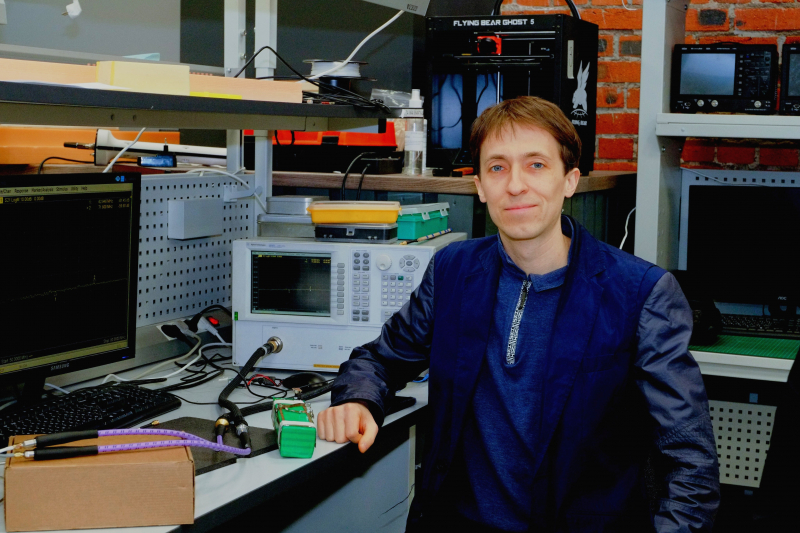
Pavel Seregin. Photo by Ekaterina Shevyreva / ITMO.NEWS
Circular polarization
The proposed model includes a receiving structure, i.e., a near-field antenna, and an RF/DC current rectifier. The device harvests energy from circularly polarized electromagnetic fields, which makes it possible to increase the efficiency of the system by almost two times compared to its alternatives, which convert linear polarization only.
“The radio-frequency magnetic field is characterized by a vector oscillating over time. Conventional energy harvesting systems are constructed in such a way that they can convert a linear polarization only. In this case, the magnetic field vector can only move along one line (e.g. up or down). We, in turn, developed a setup that naturally converts circularly polarized magnetic fields, within which the field’s vector rotates like a clock hand. Such a polarization is exactly the same as used in most MRI scanners, which allowed us to increase the performance significantly. Our setup can take almost twice the energy compared to previously available energy harvesting devices for MRI,” explains Oleg Burmistrov, one of the paper’s authors and a PhD student at ITMO’s Faculty of Physics.
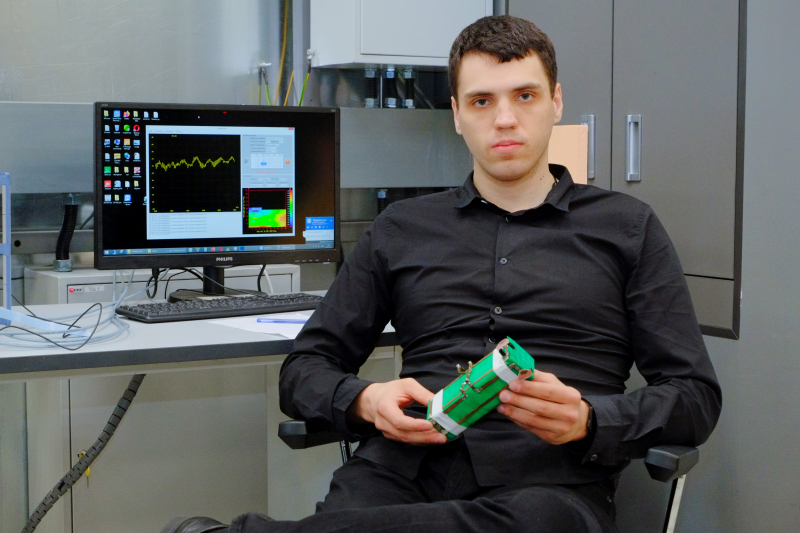
Oleg Burmistrov. Photo by Ekaterina Shevyreva / ITMO.NEWS
On the way to wireless devices
As noted by the developers, they managed to obtain a power density of over 1,000 mW, which is enough for gadgets like wearable heart rate monitors or respiration sensors. The harvesting device can also be used as a secondary power source. Although it can be readily implemented in power supply systems of wireless local MRI coils, the researchers want to achieve even greater performance so that the technology could be used to power a wider range of MRI equipment.
“Numerical simulations have demonstrated the safety of our system and ensured that our energy harvesting setup doesn’t affect the homogeneity of the magnetic field. In other words, it doesn’t decrease the quality of MRI images. The same results were obtained when performing experiments with phantoms (vessels filled with liquid that imitates the human body) that were placed inside an MRI scanner,” says Pavel Seregin.
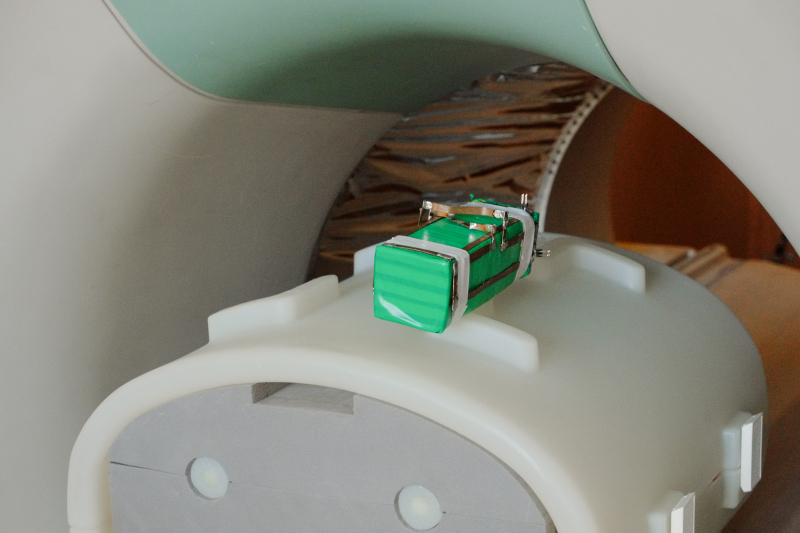
The prototype of the developed device inside an MRI scanner. Photo by Ekaterina Shevyreva / ITMO.NEWS
Both Master’s and PhD students were involved in the study. As stressed by Pavel Seregin, students of the Master’s program Physics of Radio-Frequency Technologies study specialized disciplines related to MRI technologies. Thanks to this, the students have the chance to participate in cutting-edge research and contribute to the development of the field at their alma mater.
The article was featured as an Editors' Suggestion in Physical Review Applied.
Reference: Pavel Seregin, Oleg Burmistrov, Georgiy Solomakha, Egor Kretov, Nikita Olekhno, Alexey Slobozhanyuk. Energy-Harvesting Coil for Circularly Polarized Fields in Magnetic Resonance Imaging (Physical Review Applied 17, 044014, April 2022).
